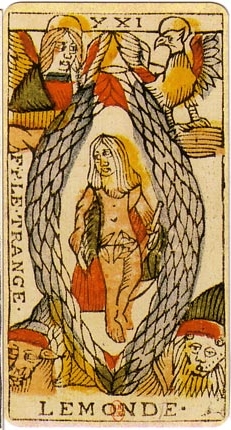
XXI. Les plats incrustés d'éclats d'étain [fondu argenté]
Every turning is a new wall texture of medina emptied by the gendarmerie's tin
Logic of six projectiles in the pursued, as entrapment of the necessary air for concrete
Paving, with its chalk-lined bodies—Cakewalks, supplanted by minstrelsy; original mic prodigies
Mimicked by suburban flight's surfeit of the available binary—Suspect liberation from cloaking
Engineered at the nanoscale; possibilities, so much as burned Maghrib condensation Nicolas de Staël
Encountered while serving in the Foreign Legion (1941), in the Northernmost African country and city with two Mediterranean coasts—
Beneath impastoed faces of Ellison's Invisible Man (1952), a refrain (1922) of the Shantih mantra, in Baldwin's "Stranger in the Village" (1955)—Coastlines
Sheared inside heat islands of upper rooms of New York City tenancies, and Swiss thermal pools patrolled by a gendarmerie of tin
Brand shopkeepers—Refugees; the most unwelcomed in the world, and shtetls then earning the only distinction of being dispersed, Nicolas de Staël
Left Poland for Brussels (1922); a two hour train ride to Antwerp, to the passed over disembarkation point to the Poland Street Workhouse in the parish of St.James; poured with concrete (1925)
For a carpark—Strolling the perimeter of Jardin Majorelle with Jeannine Guillou (1938); its azure scaled by wall creepers, de Staël understood the concert of Louis Armstrong—Prodigy
Of the dented cornet handed up him by Karnofsky (1907), the owner who sat with him on deliveries cloaked
In coal dust himself—Baldwin, himself born the year of Rhapsody in Blue (1924); everywhere, tin snow of resonant piano wires cloaking
Lead plates for a score, of the Gershwin catalog—Otherwise, the perpetual mutability of players's untreated steel springs gathering harmonics as jagged coastlines,
Sagging hole-in-the-wall clotheslines—“Sonny's Blues” (1957); faltering for a time, until he rediscovered the fundamental—His brother, and prodigy
Of Creole closes with a cover of Ethel Water's Am I Blue (1929); married at 13, and making her debut at Baltimore’s Lincoln Theater, oblivious of resoled brogues, or the soot-stained unfinished tin
Painting of some nonstrategic monument to a vase’s blooms, Nicolas de Staël's
Ceiling opens, for her, and for those confined within the begrimed concrete
Consecrating the mass of remaining red backscatter, at the border of Earth’s own shadow, Le Concert (1955); two days before the artist's body shows on the concrete
From from eleventh floor window—Irving Mills arranges St. James Infirmary Blues for Louis Armstrong on Odeon (1928); his own label, renewed (1929)—Cloaking
Trumpet, piano, cello, and the drums; each in their own self-deliberated cadences, coming through aerial views of Nicolas de Staël's
Palette knife brooding on the planes of Braque's mandora or lemons, or Deyrolle's neutral baton charge—The concealed rift within the coast
Courses through Fifth Avenue to the acrid Harlem River, with no presumed mingling with the sources of the Helicon—Baldwin's dedication, from The Amen Corner (1954); among others, to the saxophone prodigy,
Charlie Parker, whose Cool Blues (1952) riffed on Ellington's orchestral Blue Ramble (1932), from the peeling tin
Glazing of Prohibition rooms—Musicians having a premium on these revelations, on Giovanni's torn blue note (1956) smuggled out of death row folded in his fist as a tin
Whistle; its pieces blown in his own arranger's chorus of cowardice and remorse—Concrete
Aggregates of Roman roads on the Provençal coast, where the prodigy
And high school classmate of Richard Avedon, sought the sea’s reflective cloak
Into its ocher ramparts, once the Berbers's dominion—Nicolas de Staël's
Docked black trawler of Marseille sous la neige (1954) likened to the author as he coasts
Among icy stares, of a black-faced Sinterklaas, worming down chimneys the saint snubbed—Coasting
Audience goers, the whitecaps of the Cotton Club, with affectations of plantations in jungle music, where tin
Mordant fixes calico dusters worn by their paid cooks and nannies; free and clear of all liabilities—Nicolas de Staël's
Twisted fire escapes and fallen scaffold, of La vie dure (1946)—The concrete's
Soldered joints of emigrant musical traditions lead to Baltimore, New Orleans, New York, as Benny Goodman's parents—Eugene Worth; left sifting the improvisations, beyond prodigious,
Glancing Skylines, jumped off the George Washington Bridge (1946); and three years before, a white policeman shot a veteran in Harlem, inciting a race riot, following burial of Baldwin's stepfather, and a layman cloaking
Hellfire—Coasting, the crowd's effective participation is once again stalled by private interests, with block expansions of cloaked incarceration systems; legible as capitalist regard for their redundancy—
Plaintive and imitated, Bessie Smith, concretized as Nicolas de Staël, who shaded whitewash with sun,
Whose first album sold 2 million copies (1923); yet, could only be played by a dignified man in Leukerbad, or Istanbul—Our voices obey the assemblage, of wrestled prodigious destruction, theirs and our own, unless the tin dime banks of that period constitute just a charm—





3 comments:
Yes, Nicolas de Staël lived in Brussels in his youth after the death of his parents in 1921-2. I would like read more about his formative years there.
https://books.google.com/books?id=Bl9DLQ3a8t4C&pg=PA299&dq=nicolas+de+sta%C3%ABl+brussels&hl=en&sa=X&ved=2ahUKEwj1zPmDjvLuAhWLFlkFHSTzD1oQ6AEwBXoECAYQAw#v=onepage&q=nicolas%20de%20sta%C3%ABl%20brussels&f=false
The impasto technique with a palette knife is employed with a different effect by Pierre Soulages. Outrenoirs.
https://m.soundcloud.com/radiofranceinternationale/loutrenoir-explique-par-pierre-soulages-le-maitre-du-noir
https://books.google.com/books?id=WhcqEAAAQBAJ&pg=PP33&dq=%22Soulages+increasingly+interrogated+blackness+in+his+own+art.%22&hl=en&newbks=1&newbks_redir=0&source=gb_mobile_search&sa=X&ved=2ahUKEwjRsc-U4seIAxVIg4kEHfbFHtcQ6AF6BAgFEAM#v=onepage&q=%22Soulages%20increasingly%20interrogated%20blackness%20in%20his%20own%20art.%22&f=false
https://youtu.be/Jv7zFXQXvTk?si=A4zomh4_ifO1zJNl
Post a Comment